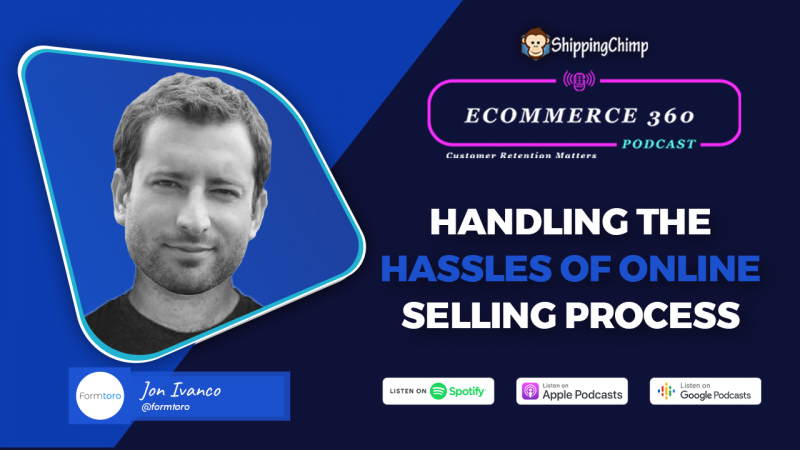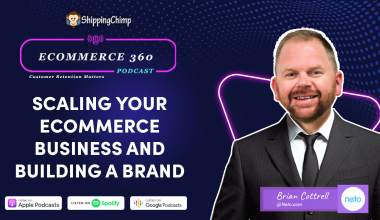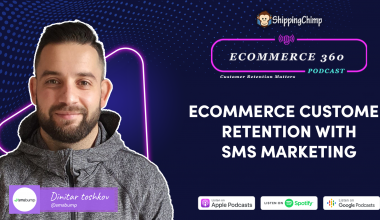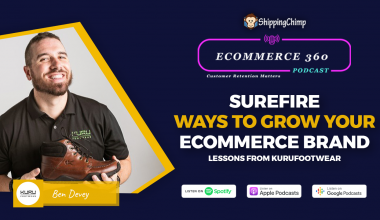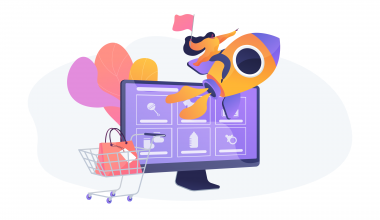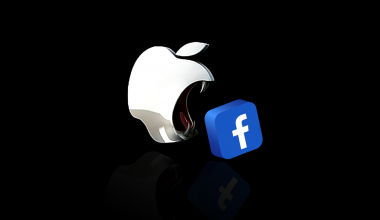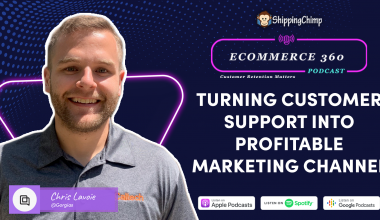In this episode of eCommerce 360, Jon Ivanco gets candid and draws attention to differentiating company journey against customer journey. He debunks the vanity metrics and offers guidance that e-commerce businesses can consider to be a true north star!
In this episode we cover the following topics:
- Challenges in the mapping customers journey
- Improving cart abandonment rate
- Calming Buyer’s remorse or anxiety
- How to balance acquisition vs retention strategies?
- What are the vanity metrics that brands must get rid of?
- Trends in eCommerce
Revathi: Hey folks, welcome to ecommerce 360. Today we have someone special, we will like to call him that ecommerce doctor for he has the power to diagnose the exact problem that your ecommerce is ailing from, and more importantly, give you the exact antidote. So, welcome Jonathan Ivanco, co-founder of Formtoro. Hey, Jon, welcome to the show.
Jon: Thanks for having me, Rev.
Revathi: That’s great. So, let’s get started. Like from the beginning, what’s your story? Tell us a bit about yourself.
Jon: My second version is, I have been fascinated by ecommerce for pretty much my entire adult life. Went to law school came out work for a bunch of startups and got my first taste of how businesses and technology were changing the way that a normal businesses were working. And after a stint at a company called Life X, running their marketing and customer experience, I realized firsthand over a couple of years what it was like to take your e commerce brand from Kickstarter all the way to acquisition. And kind of all the daily that goes in behind that. Did a lot of consulting after that. And during that, and worked primarily with e commerce companies in order to figure out the best way to market maintain profitability and grow using data. So, my latest ventures Formtoro, which is about helping ecommerce companies use data more effectively, in order to stop guessing and start getting results.
Revathi: That’s a great story.
When we are talking about mapping a customer’s journey, from the moment a customer lands on your website till checkout, how do you go about refining every interaction that your brand has, with the customer from an ecommerce perspective?
Jon: I think the first thing that I always look for is the difference between a company journey versus a customer journey. And what we see more often than not, today is all a company journey.
If you land on a website, for the first time, you’re hearing about what the company does, or why the company is the best it’s not about the people that the company represents. It the all the wording and all the copy is related to what the company wants you to do, which has to do with where you’re at in a buying cycle. You could be there for the first time because you saw something that’s interesting. But if the content doesn’t relate to why, you got there, you’re going to hit like wall really quickly.
Great example of this, in my spaces is pop ups, when you hit that first pop up, you have a website, it’s always save X percent on your first purchase. And it doesn’t make sense that you would save on your first purchase, because that tells me that you only want me to purchase once. So that’s the company’s goal is to get you to purchase not the customer’s goal of like trying to test out your product and purchase multiple times or anything like that.
So, there’s a lot of things that we put artificial stops on. We bury return policies in the footer. We don’t make things very clear as to how things work. We make people navigate off-site to learn something. And sometimes reviews like we do a lot of things that aren’t conducive to where the customer is actually at in their journey. And we have data and stats from people that have signed up. And almost 50% of the people that are signing up, are looking to purchase in a couple of weeks. So, if they’re looking to purchase in a couple of weeks, they’re on a much a different path.
And yet a lot of these brands are sending out 7,89 emails, including five and a welcome series with the buy, buy, buy, buy, and it just doesn’t make any sense. I think for everyone to understand bringing in the customer journey and how to make sure that the touchpoints are great.
You have to ask yourself if I was looking to buy is what I’m presented with helping me to do that.
And is it geared towards the risks that I have with making a purchase from a brand-new company?
And if I’m looking to buy in a couple of weeks, does the same content apply?
And if I’m just there browsing, and I’m comparing a bunch of different brands, what can I do to create an experience that’s going to bring me into kind of the community and let me grow with that community in a way that isn’t sales related.
Revathi: That’s great. So that’s awesome talking about customer experience. So, cart abandonment is a huge challenge for e commerce, businesses and even greater challenge does figuring out why these high intent customers, the customers who wanted to purchase from a particular brand are abandoning a cart? You don’t know why?
How do you think eCommerce brands or businesses can combat the challenge of cart abandonment which is clearly, a case as well a high intent purchaser, or a buyer is abandoning your brand for some reason?
Jon: Cart abandonment is an interesting thing. I know, there’s a lot of stats thrown around that say it’s 80% and it’s even higher on mobile. And I think that there’s a couple of things that are working. kind of not in the right direction. One is a lot of people start their journey on mobile. It’s absolutely terrible in terms of an experience to check out and do things. And most websites aren’t optimized or don’t have a separate site for mobile.
And this is a huge, I would say like the number one thing for ecommerce thinking moving forward is making sure that your site is optimized for mobile and a good experience for checkout on mobile.
The other problem that we have is mobile’s usually a stripped-down version of the site that doesn’t give as many details. So, a lot of people start their journey on mobile, and then they finish on desktop. But because they’re two different devices, we can’t track across devices. To know is the same person.
So, it’s entirely possible that your high abandoned cart rate on mobile is expected and should be expected. And is actually a lot lower than it is there’s just no way for us to really track.
So, I want to throw that out there first, the second part of abandoned carts happens for a couple of reasons.
One, someone genuinely had some degree of hesitancy about completing the purchase. And we read all the articles, they all say the same thing, they all say is price related or shipping related or you know, having to create an account, blah, blah, blah. I don’t think it’s any of those things. I think, from data that we’ve looked at a lot of the times people will add something to a cart, because it’s an easy way to bookmark that item and know you’re going to get an email about it.
But I mean, I’ve seen cart, abandon rates that are less than 40% on some accounts where people just add and they end up purchasing because they know that the journey that they were taking on leads them to feel confident and making that decision happen. I think there’s a couple other things that play into this.
And I know I’m going to get slack for this, but there’s a tendency to do cross sells and up sell and add a bunch of confusion to the decision when someone’s already there and make people think, should I be adding more to this, that’s, and we do the same thing where you have a minimum shipping threshold to hit. I don’t want to go on a tangent, but I’ll have to save the people that have been looking at doing cart abandonment relating the shipping prices are absolutely clueless.
And this includes big brands as well, you can look at big well-known brands that have conflicting shipping and return policies. That you’ll pay more for shipping than you would the flat rate return or the returns are free, but you have to pay for shipping on the way out. But when you actually review all these things, we’ve artificially created a bad environment that’s based on the company journey, not the customer journey. Because most of the time the customer, if they’re close to getting free shipping, you’re telling them they have to leave the cart page to go find an item that matches something that they don’t necessarily want to purchase at that time in order [inaudible] unfair with a conflicting policy on the website.
So, it’s a really complicated subject that I think deserves a much longer discussion. Because there’s a ton of things that exist on a site that are playing into this. The easiest fix though I would say for anyone that’s dealing with high cart abandonment rate right now, is most people do a 30-day return window. If you ratchet that up to 60 or 90 days, it actually decreases the return rate and it doesn’t cost you a thing.
Revathi: Okay. That’s very interesting. After cart abandonment, we’ve come to the end of the most anxiety ridden part of ecommerce which is shipping where there is absolutely radio silence from brands, when it comes to shoppers, they have no clue where their order is, except order after the order confirmation message that they receive. How do you think of brands should be getting a handle on the post purchase experience and especially through emails or to the notifications?
How do you think eCommerce brands should calm the buyer anxiety, in a much better manner?
Jon: I’m really glad but it says anxiety because I think a lot of people and brands in the company journey say, someone, ‘s super excited that they bought a product, right? They’re really, really happy about it. But every time I hit buy on any product, there’s like the split second that says, should I have purchased that? Is this going to live up to expectations? And I really don’t think that we in eCommerce consider that part of the customer journey, but it is the customer journey.
When I checked out there’s always a little bit of hesitation of is this going to be worth it right? And what’s what am I going to have to do if I have to return this to add two packages back up? Do I have to send it back etc. I think anxiety happens before you purchase of not knowing and not having it clearly laid out as to what happens if you want to return this. I would love to see more people, I would love to see more use of information like pop up modals.
On like your cart page and on stuff like that where it says what happens if I need to return and it lays it out in quick, easy steps. I think that would be amazing. Because I always am going to have that question. If it’s not clear, make that information really key. I know this is all like pre-purchase. But pre-purchase affects post-purchase. And we don’t give it enough credence for that. Because if you go in with clear expectations, you are able to leave and handle that with knowing where a package is at that total frustration point especially over COVID with like the post office taking forever, all the backups, and the insane amount of eCommerce that happens in the anticipation of like an Amazon delivering on Saturday and Sunday and most other brands just not know other shipping carriers not like.
I think that people are genuinely patient if you journey with that store. But there’s not enough of the narrative related to the advantages of buying direct. And that feeling you get of buying direct of being able to directly support the company and the people. Because a lot of consumers don’t care. The customer journey is I want the best price and wanted to give me the absolute fastest the company journey is pleased buy from us so that we can make our extra 30% margin because it helps keep the lights on and helps keep the cost low to you guys, right. And no one says that on their website.
Like it would be really great if a company said, Hey, we’re available other places. But here’s why we’d like you to buy from us because we’re able to make more profit margins allows us to pay everyone better here at our company and allows us to continue to grow by buying from somewhere else, even if they’re a partner of us, it’s directly cutting into our bottom line. If you said that to someone on your website is to wait for a package, you feel like you’re it’s a badge of honor, you’re waiting because you feel good about waiting, because it’s the right thing to do for to support a company that you like. And that goes into kind of what you’re talking about with post-purchase is I’m okay with getting emails, I’m okay with the occasional text message to if it’s something that I really want to see, I do see a lot of that changing though I think that in the next four years, most stores are going to have their own progressive web app or a app that you can have on your phone.
So, you’re going to get a push notification when something happens, which I think is where we’re headed. I don’t think SMS is the answer. I think everyone’s leaning on it really hard as a channel like it’s going to go away in a couple of years, I think that your traditional emails are always going to get high open rates just to see where things are at. But back in the day, if it was something I really wanted, I’d be checking the tracking.
Now I don’t care, it’s going to show up when it shows up. And I only get worried if it doesn’t show up over X amount of days. So, to your point, like I want to hear from someone is has something materially been updated? Or do you know something’s going to be slow down? Do you want to give me a heads up? Because that’s always nice.
Revathi: Okay, that’s great. So generally, alerts only if something goes wrong as what you’re saying, as far as post purchase emails are concerned. But dating a bit of detail here, you know, there is this age-old war between acquisition and retention strategies.
How do you think brands should strike a balance between acquisition and retention?
Jon: God the amount of people that are hiring right now for retention specialists and this whole shift to like customer lifetime value. I don’t think people really understood that. That’s what you should have been doing all along. And there are so many instances of a company journey versus customer journey on a website that’s all geared towards convert, instead of are they ready? Can we build a good experience that they’re going to enjoy?
Customer lifetime value is really interesting because I’ll give you two scenarios. One is someone signs up and then they progress. Their customer lifetime value is $200. And they buy incrementally at $20 apiece for 10 times right and they do this over two years, right so they accomplish that. Yay. retention. If someone signs up and spends $200. On day one, you’ve already hit your customer lifetime value do you care? It’s a fallacy of an argument to say that you have to do retention in order to hit a customer lifetime value. My goal when I work with companies is instead to think about differently. If I can get you your entire average customer lifetime value within the first six months, let’s go find someone else like that person. We have so much data based on their buying behaviors, and data associated with the path that they took. That we just need to go find other people like them. If they come back, you know, if someone purchased and hit their lifetime value within the first six months that they’re going to be a customer for life, they like your product they bought multiple times, you really don’t need to chase them, you do not need to go after them with discounts and emails and bring them back into a fold, they’ve hit it, they go on a separate list where you’re just nurturing them about like the brand and the type of industry, you’re in, and they’re going to be fine.
And they think that we’ve gotten to the point of all these retention specialists are going a lot towards email and they only benefit the company, they don’t benefit the customer. Loyalty programs are the biggest shill out there to be completely honest with you, like I don’t want to have to sign up for a program gives you a bunch of information to get coupon codes and select stuff.
Why that’s like me making a concession for the sake of the company that has nothing to do with my buying journey, my buying journey is to give me a coupon code that I can use the first couple of times over a couple of months. And then if I like your product, I’m going to come back if I don’t have not, and then you can follow up with me because you know that it’s accessible to be used multiple times, but I haven’t, all of a sudden you have a conversation starter, instead of your three points away from unlocking free shipping or whatever. Like, that doesn’t work. Because if I go to Amazon, I have free shipping.
So a lot of the things and a lot of the gamification that people are trying to do is actually has nothing to do with where a customer is at in their buying process at all. acquisition.
On the other hand, iOS 14.5 just dropped. And I think there’s a lot of my friends in the ad industry that are very worried and very concerned about being able to track people across. I think acquisition is an underrated part, it gets a lot of focus, but there’s a lot of people that are really bad at it. And if you go to Facebook or Instagram, and I challenge anyone to do this, go and scroll, and you’re going to see an ad in every about third post, take a picture of all those, put them in like a little collage or you know folder and take a look at all of them. And you’re going to notice they all look the same. And we’re complaining about bad costs on the acquisition and rising costs on acquisitions and everything else. But we forgot that the large portion of acquiring a user is getting their attention. And if everything looks the same, and I’m looking at earth tones here, everything’s in earth tone. These days, if you don’t stand out in a feed that’s comprised of other items that look similar to people and that aren’t bright and then don’t show up, you’re never going to get noticed. And you cannot sell anything unless you get noticed, first and foremost. So, the debate between acquisition and retention isn’t really a debate, they have to work together but they have to work.
They have to work in such a way where you understand the value of each of those differences. And you understand how to co-exist in working together to create one unique experience for the customer. Not based on the company. Because right now acquisitions about buy. Everything’s about conversion.
Most people though aren’t ready to buy right away. So, what do you do we send them more emails that say buy, but we don’t actually nurture them through a buying process. We just say, you should have enough information our products the best you should purchase it. That’s not really what a lot of people are looking for when a lot of people sign up or opt into something and they’re not ready to purchase it usually means that they’re comparing other products and space.
It’d be really great if people started actually acknowledging that fact that they’re looking at other products and took a different approach would be like, are you considering whatever four-way stretch pants? Here’s a breakdown of why and wherefore way stretch pants came from and how they’ve evolved over time and you know what they’re great at doing what they’re not so great at doing. Should you wear four-way stretch pants to you know a bit. Probably not. Right But like, great for not great for there’s a lot of good content. That would be fun. In that to kind of explain why something’s good that we’re just not doing. And I don’t know why I think it’s general laziness, because we had it so easy for so long with ads. And we had it so easy with emails to set and forget. And as long as you sent out an email, people weren’t getting a ton of them from brands, so people would see it, and then they’d end up purchasing, but I see those days are radically numbered.
Revathi: What you’re saying is stop scratching the surface on both acquisitions as retention and go deep down? That’s great. So, you mentioned CLV. Right, let’s talk about other metrics that are worth measuring. You know, from a growth perspective for e-commerce businesses. What do you think are very relevant or kind of the NorthStar metric? \And what do you think are completely useless and irrelevant, and still, marketers are, you know, kind of measuring it, despite its uselessness?
What are the vanity metrics in eCommerce?
Jon: I think most of them are irrelevant. I hate to say it, I really don’t think any of them are too relevant anymore. conversion rates, if they’re low, it’s because you have low-quality traffic and low intent traffic sites have a low signup rate. Once again, it’s the quality of your audience. It’s got nothing else to do with anything else. But your sign-up rate on a website doesn’t actually matter. It’s the signup to the conversion rate that matters. And then it’s your sign-up to conversion rate and repeat purchase rate that actually matters. So, people are focusing on all the wrong numbers for all the wrong reasons.
And as marketers, we got stuck into this book of KPIs that we were told that we need to hit and as long as we hit them, we get raises, we get promotions, we look really good and everyone’s happy. It’s the same thing with an agency when you hire an agency in my LinkedIn, post bash on agencies a bit around this, and it comes down to transparency where an agency tells me that their average row score is like 3x, or whatever, that’s spectacular. I don’t care. The reason why is this I was blinded row as between New and retargeting and the majority of businesses make all their money on retargeting. retargeting happens to be usually like six to 8% is six to 8x is where you’re like looking at[inaudible] their organic and like their top of funnels, it’s usually like, one 1.2-ish, somewhere in there. So, we’ve been focusing on numbers that don’t actually relate to anything.
And if I tell my group that’s running ads that I need to see an 8x rowers, no matter what in order to make money on the product, because of the cost of the product, the cost of the salaries, the cost of shipping, the cost of everything else. It changes the mindset a little bit, but people are thrilled that 3x 4x is the same thing with you know, your abandoned cart stat, right. 80% abandon cart, what if we could just increase this less than this, like 5%? Why have they abandoned carts, we don’t ask the questions as to why something might be happening? And we follow the same pattern of focusing on numbers that we’re thrilled with. email open rate 25%, I’m spectacular. 30%. I’m doing percent I’m a god. Right? Oh, I got 4% click through sweet, right. That’s really bad. 4% click through is 96% of people it didn’t resonate with that message. You messed up.
So, all these KPIs that we’ve been benchmarking against are a result of bringing in some really bad numbers to in order to get to them and say that, then we’re doing really well. I think the KPIs that people should be paying attention to, is just doing better. That easy, every single week, just doing a little bit better if you sent something out, and it did, okay. Find out how you can make it do just a little bit better. I mean, there’s a lot of talk about 1% better every week, and in two years, you’d hit like 100%. And I really do believe in every Friday I like to go through a post mortem with everything that we ran through the week. What worked well, what didn’t work, well, what would we have done differently? What are we going to do different or when something goes really wrong? I like to do it when things go right. I like to do it when things go wrong. I like to do it every single Friday because any high growth company that’s got a lot of moving pieces should be all sitting around a table on Friday afternoon and talking about everything that went well and what changes you’re going to make if something didn’t go well.
Some of the ones are interesting with like customer lifetime value and AOV average order value is probably average order value and rows are my two least favorite KPIs. the average order value does not matter at all. And I know people want to jack it up and do cross-sell upsell, etc. We’ve run Has the using multi-use discounts the first orders, oh is low the second order if someone loves the product as I was high, like really high, so and I just want to try it out and I want to de-risk my purchase by just buying a little bit to test the quality and see if it’s a good fit for me. And then if I really like it, I’m going to come back and we’re going to spend a lot of money. But we’re not based in eCommerce around from the start, right? single-use discount, etc. We’re based on a single transaction and conversion and chasing instead of building. So, if we take a step back, and we change our opinion about what AOV should be, which is your first AOV should below, you want it to be as low as possible, you want someone just the buyer to get part of the brand. And they’re going to pay the shipping cost because they really care. Right?
That second purchase, though you should be looking for again in that. And if it’s not a supreme gain, and they’re buying the same product, it could be that they have a limited budget, it could be that they’re just not super convinced. But if they’re starting to buy multiple products from your store, on that second purchase third purchase, then they like your product. And it can be established that your AOV should, what your AOV is in relation to your total value as a customer, right, so you’re just building towards that building block and hitting that number. I’ve seen some customer lifetime values, and AOV’s been knocked out into purchases, like first purchases, low second purchases 10x, the first purchase and you call it a day that person is pretty much set for that particular product sector. So KPIs in general, I think we need to relook at all of them. I think they exist for the sake of getting people promotions and making sure agencies are doing their job. Most of them are quantitative, they don’t really bring a lot of qualitative into that. And I think without qualitative and quantitative, we’re really just guessing.
Revathi: So, that’s a great analysis. So finally, before we let you go after this wonderful conversation with really deep insights.
What do you think are the key eCommerce trends that brands must pay attention to?
Jon: And brands need to start running more like businesses. I mean, this is this is like the most, mean thing to say. But a lot of brands are big hyped up into making pretty social and you know hype in a story and everything else and your average ecommerce brand selling a physical good make’s maybe 30% if they’re really a well-oiled machine. So, it’s 60% -70% of all the money they make goes back into services and shipping and everything else and building the products and stuff. And I think with a lower margin product like that, and some do better than others. But 30% seems to be like the base mark for [inaudible] companies.
I think the trends to pay attention to our community over acquisition. Acquisition, not with the intent of selling but bringing someone into the community. And I’m going to the hype on this so much data is your friend. And there’s too much guessing that goes on in this industry. And as a result of all the guessing that goes on in this industry. If you continue guessing we’re going to continue celebrating 2% conversion rates if you continue guessing we’re going to sell rate 20% open rates if you continue guessing we’re going to celebrate 3% like conversion rates if you continue guessing anything less than 80% on an abandoned card is going to be considered good.
I think those are artificial benchmarks. And the quicker that teams get around to the idea that we should be doing better. And that there are options to do better, the better off we’re going to be. But that main one of all is you’re not going to be able to count on any one channel anymore for acquisition, it’s not possible, you can leverage certain channels that are always going to be better than others. But you have to take the customer experience off of that channel as much as you can so that you’re using your various channels to draw in that traffic. But then you’re capturing that data along with that person’s intent to figure out exactly what journey to put them on. And be patient. If you know that someone’s buying behavior doesn’t merit with them purchasing, you know, really soon remove them from campaigns for a couple of months. There’s no need to pepper someone.
The biggest thing that I want to say in terms of a trend is that we’ve become so obsessed with the cut of the company journey over the customer journey and it becomes blatantly obvious when you look at like something really simple. When you sign up for an email list that a normal eCommerce company, they send you a welcome series and they send you a bunch of campaigns and they just give you an email. I had 380 emails in 320 days from a company. That’s how bad it is for some companies. But when you dig down even further, when you unsubscribe from that email, the first thing they asked you is, why are you unsubscribing? When you subscribe, no one ever asks you why you were subscribing.
So, if you want to think about, everything all in one company journey, verse, customer journey and how to know and pretend like you know the difference. Think about every little interaction that you have with your customer during that journey and what parts they’re in control of, and they’re telling you what they want, versus the parts that you’re in control of, and you’re telling them what you think they should want. That’s the biggest trend, I think we’re going to see across eCommerce, there’s going to be a condensing of agencies that are offering services, there’s going to be a lot of eCommerce businesses that go out of business because they can’t compete with the rising costs. But any company that focuses specifically on doing the customer journey, instead of the company’s journey, is going to be able to see long term success and a clientele and a customer base that’s going to come back and shop for
Revathi: That’s just well, the thoughts of so folks, stay away from [inaudible] Stay away from putting down your company propaganda to the customers instead, listen to the customers. Thank you so much, Jon, for coming on our podcast today. We had a wonderful conversation. Thank you so much.
Jon: Thanks for having me.
Revathi: Thank you. Bye
